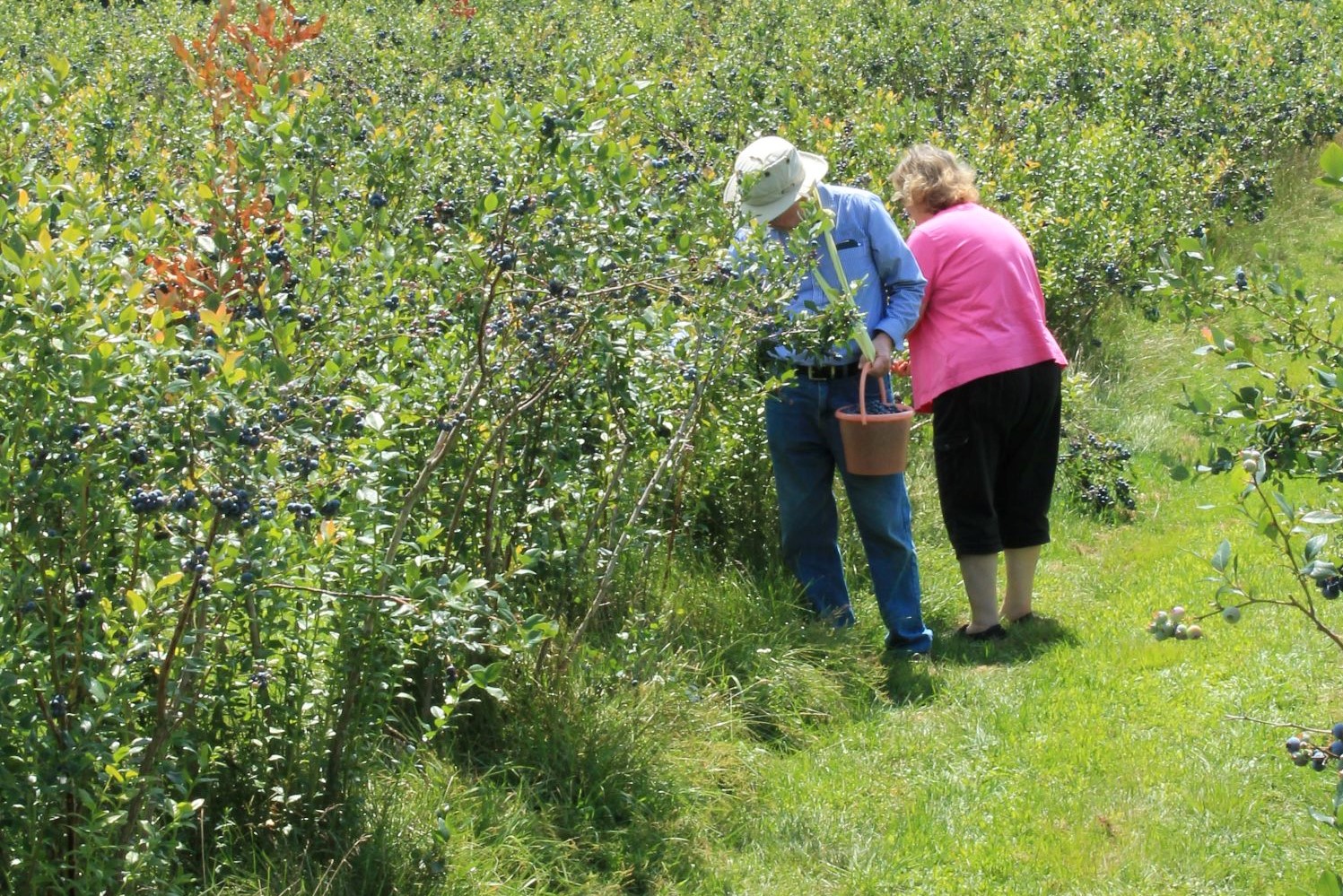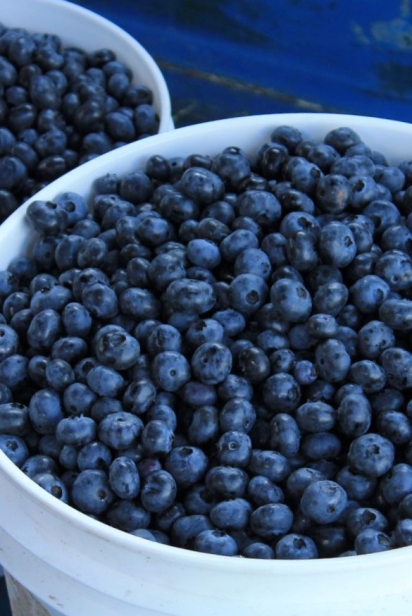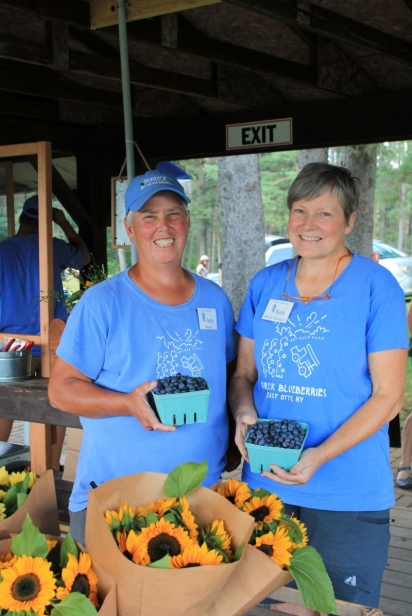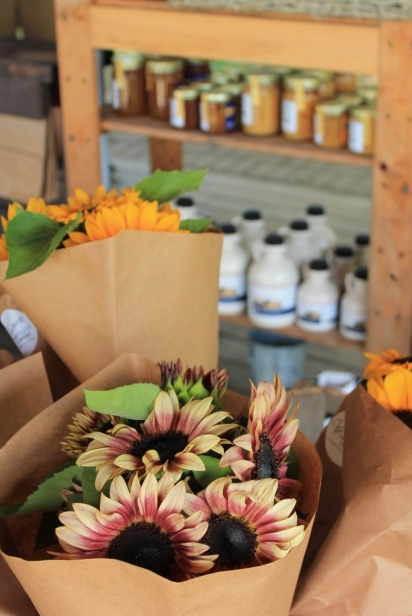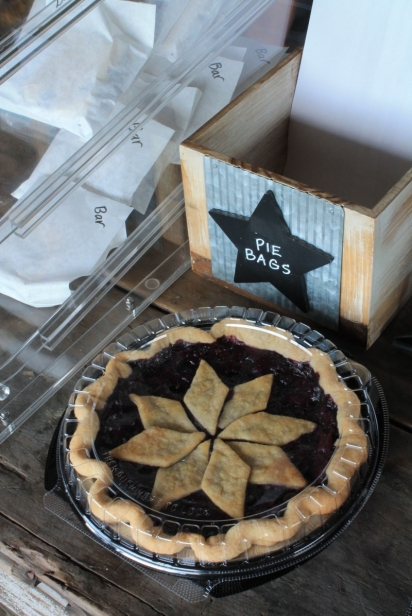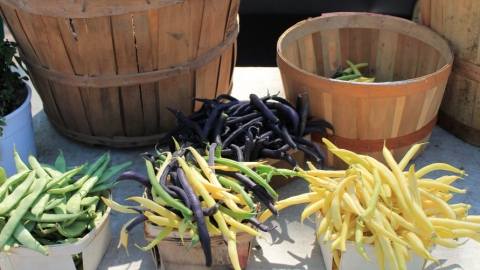Burdick Blueberries
It’s a gray day in Amy Edwards’ little corner of the world—the Enchanted Mountains in Cattaraugus County—and she’s bemoaning the impact of late frosts when she interrupts herself to point to the sky. “Oh! Look at the pileated woodpecker!” she says as its striking silhouette flies overhead and assumes its position on a nearby tree. Awestruck, we listen to its pecking echoing out over the 40 rolling acres of Burdick Blueberries.
Located three miles from the town of East Otto and 10 miles northwest of Ellicottville, the farm has long been a destination for locals, who return each season for its tranquility and special berries.
“A lot of these plants are the originals my grandfather planted in the 1950s, which is pretty crazy,” says Edwards, owner of Burdick Blueberries. “They’re not as productive as they used to be but as long as the root system is happy, they’ll keep producing.”
While it is one of the few fruits native to North America (cranberries and pawpaw are also on the roster), the beloved blueberry has only really been cultivated since the early 1900s. And though they can thrive in wild settings, blueberry plants are picky about soil and thus not easy to grow in the average backyard. “Our soil is at about 4.6 percent acidity—perfect for growing blueberries,” says Edwards.
Even a novice can tell that Burdick’s aren’t your ordinary blueberries. The farm is home to at least eight different highbush cultivars, with berries that range in flavor and size (regulars tend to prize the jumbo ones). While each cultivar’s flavor is a little different, they’re united by being sweet and juicy and complex, as berries were meant to be. The diversity also means staggered ripening times throughout the season, which generally runs from mid-July through late August.
This is one of the factors that makes Burdick Blueberries more than your ordinary pick-your-own fruit experience. When you come to the farm, Edwards or her partner Beth Strasser, or another member of Burdick’s small staff, will guide you to the area that’s best for picking that day—just as Amy’s sister Paula Jo did before them, their parents did before them, and their grandparents did before them.
“We want people to have the best picking experience possible—ripe berries but also full bushes,” says Edwards.
“We want them to be just perfect,” adds Strasser, an artist and member of the management team.
One of the oldest you-pick blueberry farms in the state, Burdick Blueberries has been serious about blueberries since its beginning. In the spring of 1952, Edwards’ maternal grandfather Milton Burdick planted the first of what would become 30,000 highbush blueberry plantings, living his dream of transforming his 40-acre potato field into a pick-your-own blueberry farm.
Since Edwards and Strasser took over Burdick Blueberries in 2015, they’ve carried on many of the traditions started when Burdick opened in 1960. They still use the same charming blue trucks to bring customers out to the fields, and continue to make up and print annual recipe pamphlets, just like Edwards’ mom did. In their retail store, they partner with local businesses to sell products like raw blueberry blossom honey, maple syrup and blueberry desserts, including pie and crumble bars.
They also grow and sell flowers, a part of the business that Edwards’ sister started. “We carried that on because we love for our customers to be able to pick their own flowers or grab a beautiful bouquet,” says Strasser. “But also, it’s really great for our pollinators and beneficials: the hummingbirds, moths and bees. The flowers give them a reason to stick around when the blueberry bushes are done blossoming.”
Edwards and Strasser have also expanded the farm’s offerings to host weddings. “This summer, one of the brides is from Randolph. Her mom brought her here every year to pick blueberries when she was a little girl,” Edwards tells me. They also host people from around the world in their guest house, which includes two bedrooms and a bunkhouse. The space is lovingly adorned with Edwards’ grandparents’ furniture and Strasser’s captivating landscape paintings. Still, the biggest allure remains the setting: the rolling fields of Burdick Blueberries.
For Edwards moving from Southern California to run the family farm in 2015 was a big life shift, and each year as a farmer and business owner has brought unique, unanticipated challenges, from COVID to spring frosts. But she felt, and still feels, a deep dedication to her family, to this place that they all loved.
“My mom didn’t want to be anywhere else, and neither did my sister. We had this tradition of just walking around the patch with Mom every time I visited,” she says. “And being here still brings me peace and serenity, just like it always has.”


